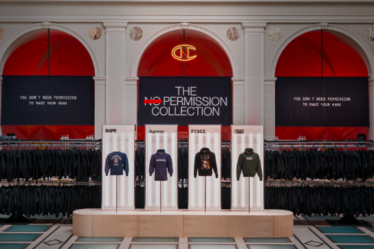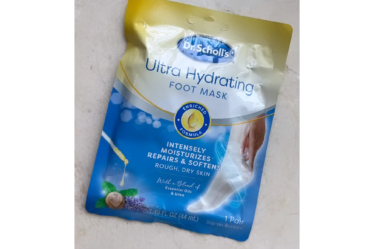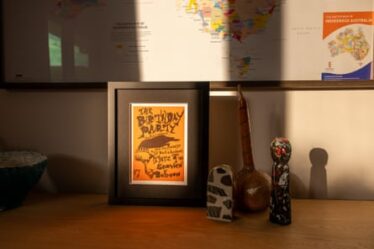
No longer a nice-to-have, sustainability standards will soon be enforced business requirements as global political bodies move to implement regulations to combat the environmental impact of heavily polluting industries.
The textile industry, for one, produces 25 percent of the global chemical output, according to environmental social governance (ESG) compliance technology platform Compare Ethics. The European Union has consequently already banned over 30 substances from being used in fashion production in its region.
More regulations are on the horizon — the EU’s flagship Ecodesign for Sustainable Products Regulation (ESPR), coming into full effect by 2025, will set minimum design standards for all individual products sold within the EU. This regulation includes requirements around recyclability, durability, reusability, repairability and limits the use of hazardous substances. Other EU rules, several of which were approved in April ahead of European Parliament elections in June, extend into supply chain regulation in an attempt to make brands more accountable for how their products are produced. Outside of the EU, the delayed but transformational US SEC climate-related disclosure — effective imminently — will require companies to report on their greenhouse gas emissions and other climate-related areas.
These impending legislations have only heightened the relevance of certification platforms like Oeko-Tex, whose partnered leather and textile testing institutes and laboratories span 70 countries across Europe and Japan. The certification body was founded in 1992 and is guided by developments in international legislation standards, such as those outlined in the ESPR or the UN’s Sustainable Development Goals.
The partnership of testing facilities provides a comprehensive range of product labels including: “Made in Green,” for items produced in socially responsible workplaces; “Standard 100″ and “Leather Standard,” for textiles and leather that have passed safety tests for the presence of harmful substances; and “Organic Cotton,” for cotton manufactured without the use of GMOs and tested for pesticides and other harmful substances. The organisation also provides a production facility certification, “STeP,” a supply chain management certification, “Responsible Business,” as well as a chemical certification, “Eco Passport”. Oeko-Tex’s certifications are compliant with several regulatory bodies worldwide, including those in the UK, US and EU.
Now, BoF sits down with Oeko-Tex interim CEO, Dr. Stefan Droste, to discuss the need for transparency through certification in fashion today, the importance of brands’ due diligence in meeting environmental standards and how to stay ahead of upcoming regulation.
Why is product and supply chain certification important for fashion brands today?
The certification system is a way to future-proof a brand by fulfilling legislative needs easily because at Oeko-Tex, we are on top of all upcoming regulations — and there is a huge wave of legislation coming towards us. Many are driven by the goal from the European Union to become climate neutral by 2025, and the United States has the Uyghur Forced Labour Prevention Act, which means you need to know where your product is coming from.
Based on legislation, transparency will become a necessity to do business at all. Our Oeko-Tex certification system helps you stay on top of these changes because it is our core business to understand what this legislation means for our partners. In turn, this allows brands to focus on selecting suppliers that are certified, so they know that traceability is a given, and to react quickly to changes in the supply chain; which are in flux all the time.
As a result, brands and retailers don’t have the headache of trying to understand exactly what the legislation means for them specifically — our operational system is designed to be easy to use and make it possible to operationalise these requirements, so that brands and retailers can then focus on their own core business.
What role does the end consumer play in the development of these certification labels?
While legislative change is the driving force nowadays for brands and retailers seeking certification, it’s not the only important factor — consumers nowadays are shopping at brands that align with their own values, their environmental conscience and at brands which show ethical business practices.
Certification helps support purchasing decisions: consumers can see a certificate that provides neutral, external proof that this is a good, responsible product, and they can make informed decisions at the point of sale. We want to help consumers understand what is sustainable, to ensure that the information is easily accessible and that the label is easy to recognise, so our task is to help companies communicate their investments into sustainability at large to the end consumer.
The certification system is a way to futureproof a brand by fulfilling legislative needs easily because at Oeko-Tex, we are on top of all upcoming regulations.
Through this, I believe we are also creating a valuable marketing tool for brands, because we are helping them to make an independent statement about product quality. One of our partners, a large e-commerce company, actually told us they see an uptick of double-digit numbers in traffic to their site and in turnover for certified products.
How is Oeko-Tex’s certification programme prepared for changing regulatory needs?
It is not yet clear how granular the textile and leather industry will have to report on the final product and I think some politicians are a little over-optimistic on what information brands can provide. However, the German Supply Chain Due Diligence Act, for example, will mean that businesses need to understand the material flow for the whole bill of materials through every production step. As a result, our certification system is already investing heavily to make sure that we will meet that demand.
We build in some flexibility to our systems, depending on what sort of direction regulation takes — but at the end of the day, our certification system needs to be easy to use. It needs to be scalable and it needs to provide actionable information for the user of the system.
I believe that our investment into this topic will pay off. If I look at the French system right now, you can use our “Made in Green” label to reclaim the benefits of the changes that are happening within French legislation. So, we are staying in touch with legislation and talking to legislators to understand what their goals are.
How do the different layers of Oeko-Tex’s modular certification system work?
The architecture of the system is a comprehensive framework. It focuses on the complete supply chain and makes sure that the products are safe, that the supply chain is environmentally friendly and that products are manufactured under socially responsible conditions. This system is broken down into several certifications which are addressing different aspects of the supply chain and the people using it, with a goal to avoid things like double testing.
Our best-known certificate — the “Standard 100″ — is laser-focused on product safety and it adapts to regulatory requirements. The “Eco Passport” then looks at the chemistry side at input level, so you have far fewer surprises in terms of unwanted pollutants. We are looking continuously at the scientific evidence that is going on or is developing for harmful substances, which is already taking into account anticipated regulatory changes, so we are not trying to catch up with legislation but remain one step ahead.
Certification helps support purchasing decisions: consumers can see a certificate that provides neutral, external proof that this is a good, responsible product.
We also provide an overview of the whole production side through our “STeP” system, which stands for Sustainable Textile Production, but which also certifies sustainable leather production. This combines the social and environmental aspects through several modules in the system, offering a report that provides a sound comparison between factories within your supply chain. So, for example, it examines whether they are improving their production practices over time and, if not, how to help them improve and on which areas they need to focus to do that.
Then, we have the eco-modulation part, represented by our “Made in Green” label, which combines product safety with production control. This is the umbrella for the other two systems, which incorporates traceability. It is a great addition to any aspect of a due diligence system that brands often have.
Why should brands and retailers engage with all layers of the certification programme?
Every brand, every retailer, is different in terms of what they need. I would describe the different layers to our certification system as cogs working together in a machine. Together, they move the engine forward. So, it’s not necessarily a question of choosing one or the other, but they are strong compliments to each other. They are modular.
Say you want to start by addressing product safety in addition to your due diligence and prevent double testing, then you start with the “Standard 100.” What we see then is the tendency for our customers to increase the footprint of the certification system. So, you can mix and combine the “Standard 100″ and “STeP” systems with our “Made in Green” label — and understand your supply chain more holistically.
At the end of the day, I believe that it makes sense to find mistakes as early as possible. Businesses should look to engage in the input chemistry control, which is the aim of our “Eco Passport.” Imagine you have to change the buttons on a garment you are producing, because they are brittle. If you switch to a certified button, you do not even have to incorporate retesting, so it improves the speed-to-market of your product.
It’s not only that the different levels give you control over your supply chain — at the end of the day, it greatly reduces cost compared to our traditional process of testing everything at the end, because you have already tested all the parts, reducing logistical challenges for anybody who is involved in quality control.
This is a sponsored feature paid for by Oeko-Tex as part of a BoF partnership.



